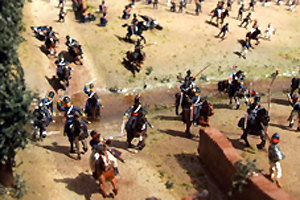The typical cuisine of the north of the country includes products belonging to the aimara tradition and others provided by the long coastline. In addition, recipes contemplate the use of llama and vicuña meat, which was eaten in abundance by the territory’s first inhabitants.
Meanwhile, the center of the country is characterized by a cuisine that mixes indigenous tradition, the typical customs of peasant haciendas and foreign influence.
The most common ingredients are legumes, potatoes, corn, poultry, pork and beef.
In the southern part of our territory, dishes have a strong mapuche influence. Potatoes, peas, and pinyon pines are some of the most typical ingredients. Chilote cuisine is also worth mentioning due to the unique preparations that take advantage of the variety of potatoes present at that location.
Although each dish can vary depending on the area it is prepared, next we show some of the most recognizable dishes of our national cuisine.
– Cazuela: it is perhaps the most typical nationwide dish. Its origin is debatable and many attribute it to the Spanish legacy (it might be a derivation of a Hispanic preparation called «olla podrida» («rotten pot»).
It is a stock that consists of a piece of beef or poultry; several vegetables, like potatoes, squash and corn; and rice.
– Caldillo de congrio (conger chowder): it is one of the typical dishes of the coast around the country. To prepare it, first one boils the conger and then you have to add the rest of the ingredients, such as onions, potatoes, carrots, tomatoes, chili, peppers and other spices, as well as white wine.
– Empanada de pino (mincemeat empanada): although it is a preparation that can be found with different variations in several countries around the world, the Chilean empanada is part of popular tradition.
It is flour dough filled with mincemeat. The latter is a mix of beef chopped into small squares, onions, raisins, eggs and olives, spiced with cumin and chili.
– Mote con huesillo (husked wheat with sun dried peaches): it is a beverage that is traditional in Chilean cuisine. It is refreshing and non-alcoholic and is comprised of sweet juice, husked wheat and pitted sun dried peaches that are called huesillos. Cinnamon and pieces of orange can also be added.
– El Valdiviano (The Valdivian): a dish with colonial origins that receives its name from the ranch given to Spanish troops in Valdivia. The original dish was made with jerky, fat and chili, and later on it included olives and other condiments.
– Curanto: its name comes from mapugungun and it means «sun warmed stone».
Unique to the island of Chiloe, it requires digging a hole in the earth for its original preparation. After placing stones in the hole, a fire is made with coal or firewood. Once they are hot, the main ingredients are added, such as shellfish, meats, spicy pork sausage, potatoes, onions, etc. The curanto also has milcaos and chapaleles, which are both traditional preparations made from potato. Later, everything is covered in cabagge and Chilean rhubarb leaves and squares of grass.
– Chilean sweets: thanks to the pastries developed during Colonial times by the nuns in the convents and the adaptation of some recipes from Europe and the Far East, by using locally available ingredients we can enjoy exquisite preparations such as alfajores, cakes and sustancias, among others, to this day.







 Batalla de Lircay
Batalla de Lircay